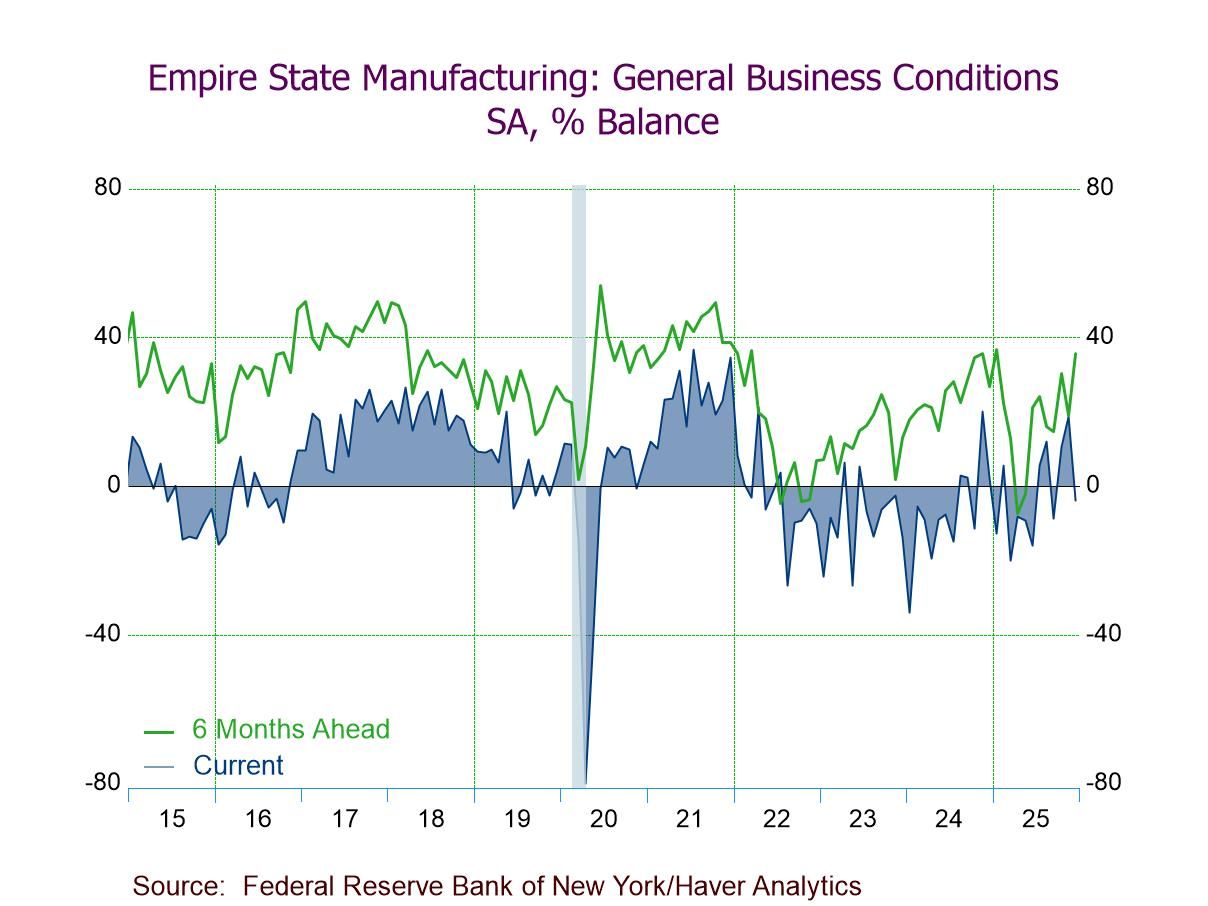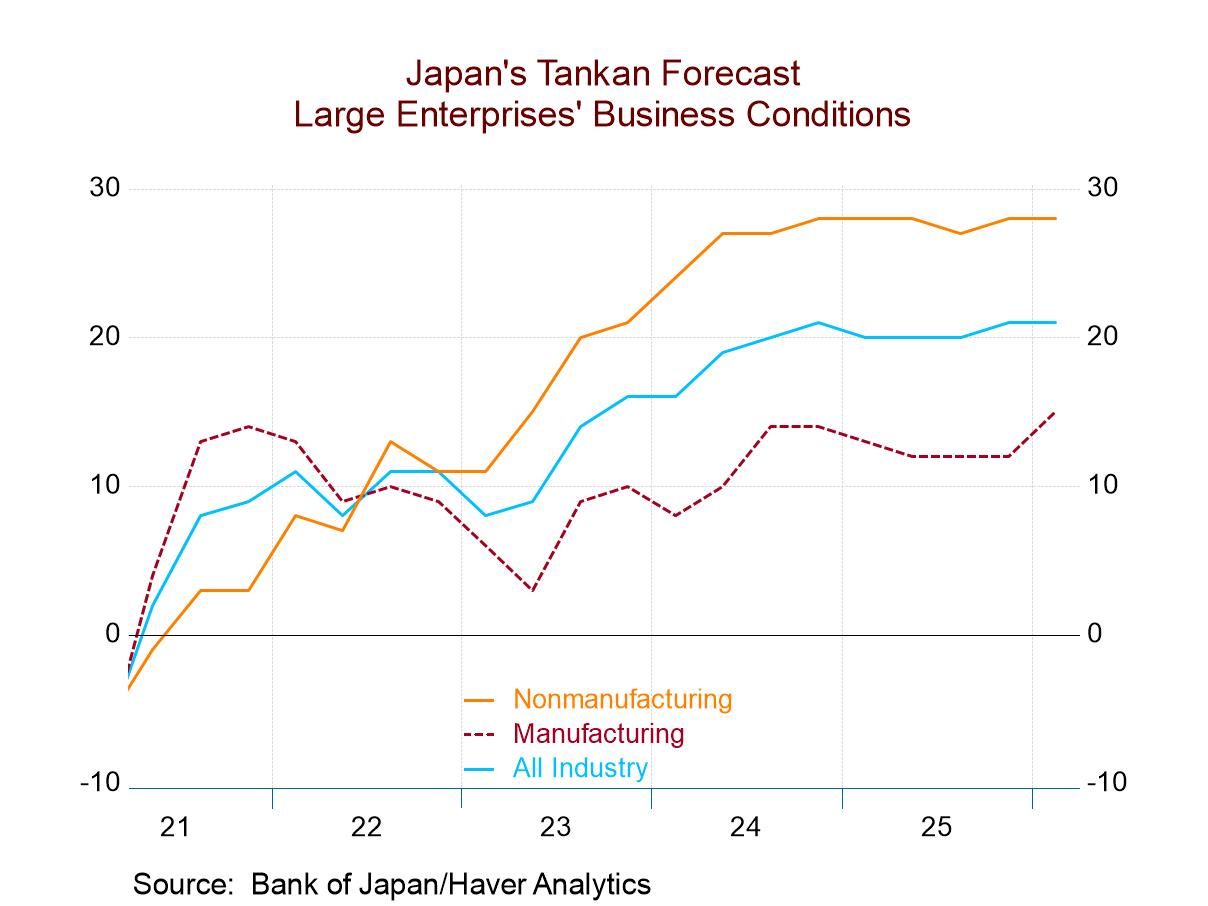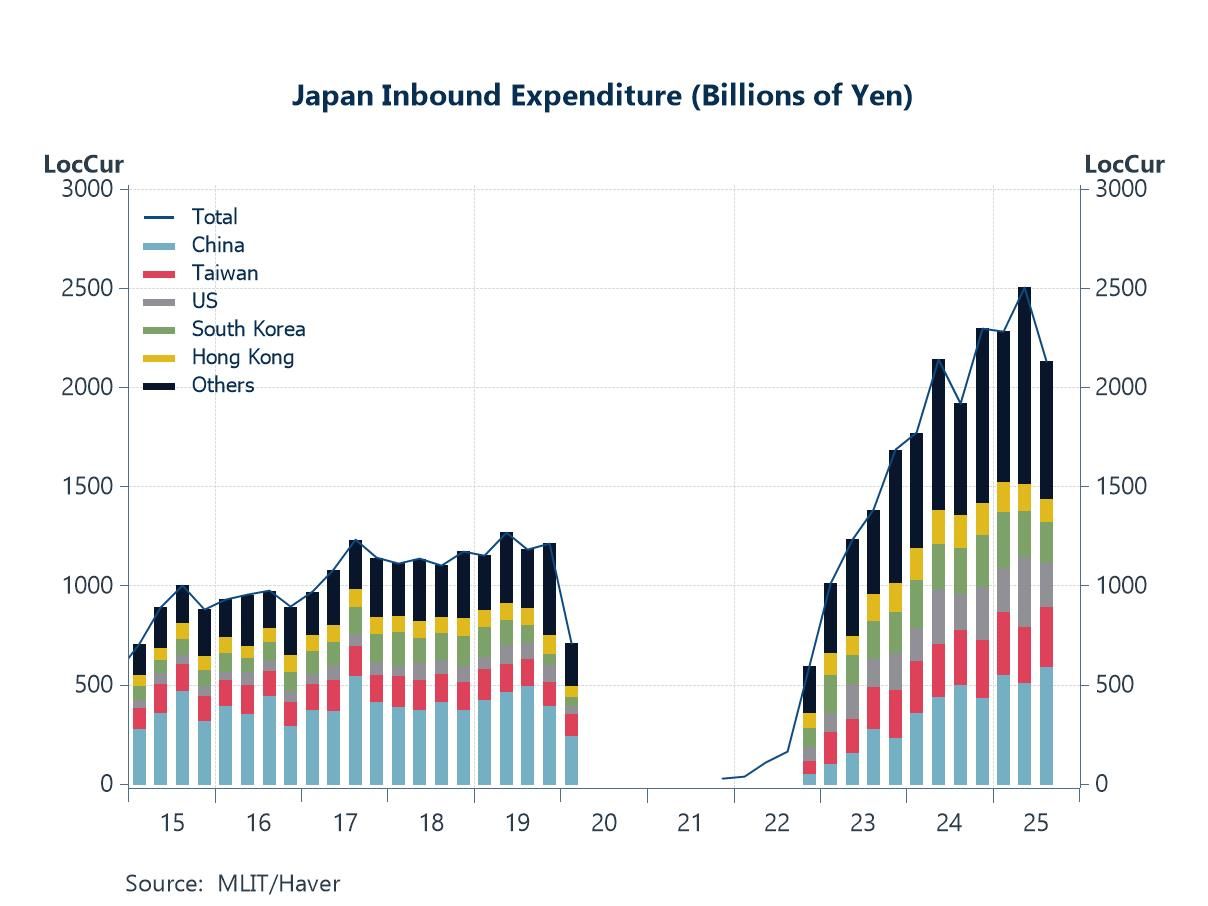 Global| Feb 01 2023
Global| Feb 01 2023Global MFG PMI Gauges Improve- U.S. ISM Is An Exception

The table chronicles manufacturing PMI data as presented by the S&P survey across a wide range of global economies. Notably this month there is a divergence between what the S&P PMI data say in the U.S. for manufacturing and what the ISM survey says. In the table, I present the results from the U.S. S&P survey while in the chart I plot the U.S. ISM manufacturing data that show the U.S. continuing to erode while the U.K. and the European Monetary Union show monthly improvements.
In the S&P survey, there is an improvement in the euro area as the manufacturing PMI moves up to 48.8 in January from 47.8 in December and the two largest monetary union economies, Germany and France, also show improvement in their manufacturing sectors. The U.S. manufacturing report from S&P shows an improvement to 46.8 from 46.2. This contrasts with the U.S. manufacturing ISM reading that falls from 48.4 in December to 47.4 in January.
Turning back to the monthly S&P data, among the 18 reporting units in the table, all but five show month-to-month improvement in January; worsening are Russia and India as well as Malaysia and Taiwan. The median S&P manufacturing gauge for January is 48.9, up from 48.0 a month ago; however, the averages for PMI data from 12-months to six-months to three-months show mixed trends.
The diffusion data for these time-sequence cohorts shows that over 12-months there are only five countries that report improved results compared to the previous 12-months. Over six-months there are four countries that show improved conditions from 12-months ago. Over three-months there are eight countries that show improvements from 6-months ago. The number of reporting units that show improvements month-to-month Vs deterioration is at a standoff in January. The median reading is still weakening on trend. The question is whether the January improvement owes to data variability or whether it's beginning of something completely new.
While the odds-on call is still for recession in the U.S. and in Europe, there's a growing chorus of economists arguing that a recession can be and will be avoided and so data that begin to show some economic resilience are going to have some play and get some purchase in markets. And this will occur until the transition of these economies toward recession either continues and until recession develops or unless resilience builds on itself and shows that recession avoidance is a real event.
For the moment, there's not a great deal to go on. PMI data do show some resilience month-to-month; however, as of January there are still 11 reporters in the table with PMI values below 50 indicating the manufacturing activity is still contracting whether it is improved month to month.
Manufacturing PMI values ranked on data back to January 2020 show only five observations above their medians for this period, Russia, India, China, Indonesia, and Turkey. The rest have standings below their 50th percentile for their queue rankings with an average percentile standing at the 25.7 percentile mark which is quite weak (just outside the lower quartile). The U.S. alone has its S&P manufacturing standing as the weakest in the table at its 8th percentile; the euro area has a standing at its 24th percentile; the U.K. has a standing at its 13th percentile; Japan has a standing at its 29th percentile and so on.
Manufacturing sectors are weak compared to where they have been (since 2019) and this has not been a particularly robust period for economic growth. And data since January 2020, when COVID struck, show that every reporting unit in the table has a PMI value lower than it was before COVID except for Russia and Mexico. Taiwan is lower by 15.9 points; U.S. manufacturing slowed by 12.3 points. No other country is lower by double digits although Germany is lower by 9.8 points.

The proportion of the manufacturing PMIs that are in the usual neutral zone (50>X>55) has been shrinking. It did rise this month but is still low with only about one-third of table-members. The first tier of weakness (40>X>50) is overpopulated compared to the neutral band and is far more represented than the first tier of strength. Over 3-months, 6-month and 12-months, there are no observations above or below the respective first tiers of strength and weakness.
Composition of Manufacturing PMIs

Summing up The global economy continues to be weak. Manufacturing had a relatively good month in January, but it's far too early to tell if this is a bellwether or a pause of some sort. Central banks continue to raise interest rates. Inflation continues to be high although, in most jurisdictions, inflation has come off its peak and there is now discussion and argumentation about whether inflation is on its way to being under control or not. The war between Russia and Ukraine continues to blaze at full speed and global geopolitics continue to be with considerable tensions from the war in Europe to saber rattling in China. At the same time, China has shown some economic improvement as it has stopped the zero COVID policies it had pursued. That shift may be contributing to some improvement in global growth as China ceases to be a deadweight loss and drag on growth for the world economy. Some global agencies have lifted their forecasts.
Robert Brusca
AuthorMore in Author Profile »Robert A. Brusca is Chief Economist of Fact and Opinion Economics, a consulting firm he founded in Manhattan. He has been an economist on Wall Street for over 25 years. He has visited central banking and large institutional clients in over 30 countries in his career as an economist. Mr. Brusca was a Divisional Research Chief at the Federal Reserve Bank of NY (Chief of the International Financial markets Division), a Fed Watcher at Irving Trust and Chief Economist at Nikko Securities International. He is widely quoted and appears in various media. Mr. Brusca holds an MA and Ph.D. in economics from Michigan State University and a BA in Economics from the University of Michigan. His research pursues his strong interests in non aligned policy economics as well as international economics. FAO Economics’ research targets investors to assist them in making better investment decisions in stocks, bonds and in a variety of international assets. The company does not manage money and has no conflicts in giving economic advice.






